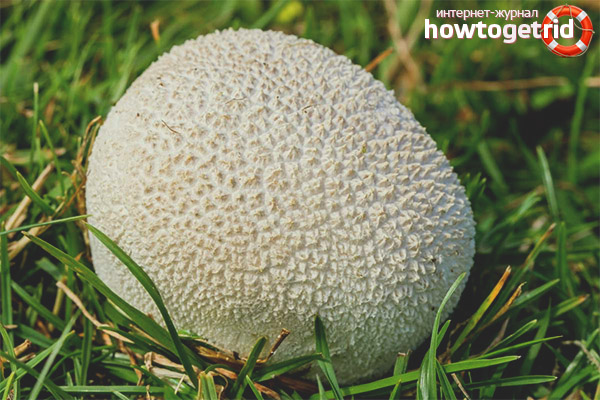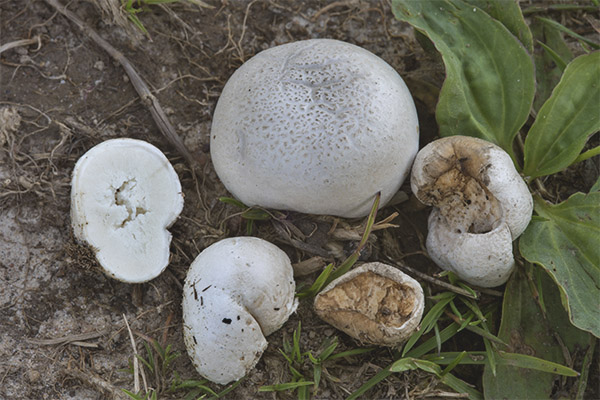The content of the article
Meadow rain coat (Latin name Lycoperdonpratense).
One of the most common members of the champignon family is the meadow rain fungus. Its famous taste is known to many, which cannot be said about the places of growth. However, before touching on this thematic section, let us characterize the external qualities of the fungus.
What does it look like?
A distinctive feature of this representative of the kingdom of mushrooms is the similarity with the ball, which is due to the spherical or pear-shaped shape of its fruit body. Its upper part has a flattening on which a hole resembling a slit is located for gray-green spores. Small in size mushrooms (cap radius - from 1 to 2.5 cm, height - 3.5 centimeters), have a light color. Under the fruit body is placed well-wrinkled leg.The cut of the fungus allows you to judge the sufficient density of the pulp, the softness of its consistency and juiciness. The passage of time affects the degree of softness of the fungus (the younger, the more solid).
The texture of the surface of the fungus is achieved by small and soft growths - spines. Washing the caps with rains removes such formations, smoothes the skin of the fungus. In the process of maturation, the coloring of the fungus acquires yellowish and brown shades. The leg and the bottom of the cap are separated by a partition, called the diaphragm. Painted in silvery white, it has a slight thickening and a pleasant smell.
Where grows?
Is it possible to eat?
Meadow rain coat is an edible mushroom.By taste, they equate it with many favorite aspen birds, which is explained by the rarity of the collection and the consumption of this species.
The preventive measure that must be done before cooking mushrooms is to clarify the place where they grew. Despite the fact that the raincoat itself does not belong to the poisonous representatives of the kingdom of fungi, it has an excessive susceptibility to toxic substances. Thus, the consumption of mushrooms, grown in places with a polluted atmosphere, can cause poisoning.
Only young white raincoats go for food, since the old ones do not have good taste qualities - the darkened flesh becomes like inedible cotton wool.
Usually, the mushrooms are freed from the skin, giving excessive rigidity, then subjected to heat treatment. For this operation, it is advised to use a dry knife, since, by absorbing moisture, the mushrooms lose their flavor. During the preparation of meadow raincoats, a woody smell appears, which always disappears by the end of cooking.
What is useful?

Not only high taste qualities are the advantage of this mushroom.He is also credited with medicinal properties, which makes the meadow raincoat an important component of various tinctures prepared by adherents of traditional medicine. For example, he is able to quickly stop the blood of minor cuts, as well as heal the places of burns, rot, rash. Mature raincoats are often unsuitable for food to help get rid of aphids. The enveloping of the smoke from the damaged trees and bushes resulting from the burning of spores saves the diseased plants.
How to prepare?
Inedible species
There are inedible types of raincoats, which include brown or black raincoat. Fortunately, they can be met less often than meadow raincoats. Dark spines or scales, as well as the yellow color of the flesh, will help you to distinguish the mushroom used in food fromwhich will lead to poisoning.
Particularly noteworthy is a giant rain coat. It is often considered a mutant, therefore, it is bypassed. Outwardly, it resembles the usual rain mushroom, only multiplied in size many times over. Its weight can reach 10 kilograms. The pulp of a giant resembles the consistency of marshmallows. Be careful! Do not step on a giant rain cover, as this will provoke the release of ripe spores, the penetration into the lungs of which can stop breathing.
Video: raincoats - delicious mushrooms











To send